Copyright 2020 - 2021 irantour.tours all right reserved
Designed by Behsazanhost
Naqsh e Rajab
Naqsh e Rajab
Naqsh-e Rajab can be a convenient stop on the way to Persepolis and Naqsh e Rostam. Although the site is very small, it contains four important Sassanid bas-reliefs, carved into three sides of a grotto-like bay at the foot of the Mountain of Mercy. The monumental character of Sasanid bas-reliefs is best exemplified in these early sculptures. The reliefs, showing the investiture of kingship in Sasanid monarchs by Iranian gods, or the king amid his entourage, reflect the pride and majesty of a newly established and powerful dynasty. The carvings also allow a glimpse into the lifestyle and rituals of the Sasanid court. From left to right, the bas-reliefs depict Shapur I with his courtiers, the investiture scene of Ardashir Babakan, and the coronation of Shapur I. The profile of Kartir together with a Pahlavi inscription is engraved to the left of the Ardashir scene. Why the site is known today as "Naqsh-e Rajab”, no one really knows; "Naqsh” means "picture" and Rajab is a common personal name. Other than this, no reason is known for the present-day appellation.
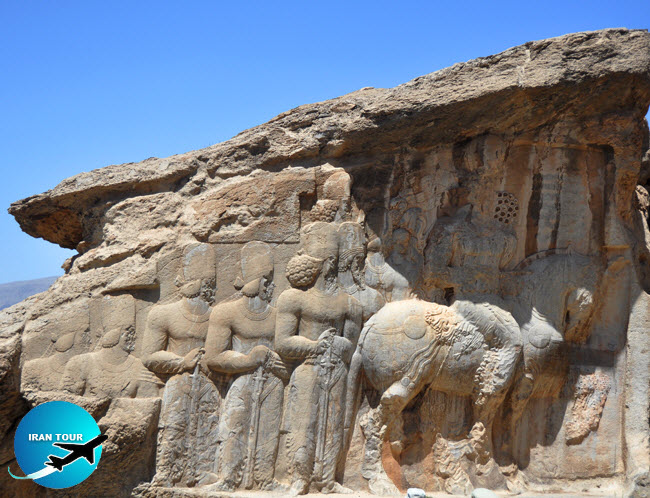 |
Shapur I with his courtiers
The scene on the left shows Shapur I mounted on a horse and followed by nine noblemen. The king wears a globe-shaped turban, a shirt that is tight around the chest but drapes below the waist, a cape fastened with a clasp, and trousers with streamers. His horse is depicted in a lifelike manner, and its trappings are carefully executed. Of the king's followers, three stand leaning upon their long swords. All the faces have been destroyed by iconoclastic fanatics of the past ages, but the heraldic emblems have survived on the headdresses of three of the men in the procession. The pose and stature of all the figures are accommodated to the configuration of the rock. An inscription carved across the horse's chest says in Sasanid Pahlavi and Greek: “This is the image of the worshipper of Ahuramazda, the God, King Shapur, King of Kings, both Aryan and non-Aryan, of the divine lineage, son of Ardashir, King of Aryan Kings, the worshipper of Ahuramazda, grandson of Babak, the King”
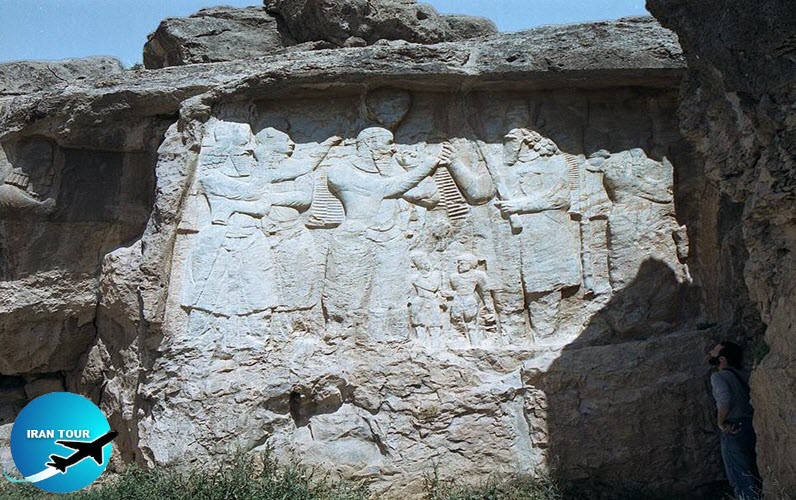 |
Investiture of Ardashir Babakan
Facing the visitor, Ardashir Babakan, the founder of the Sasanid dynasty, is seen receiving the insignia of royalty from the incarnation of Ahuramazda. One of the earliest Sasanid reliefs, it gives another version of the event depicted also in Naqsh-e Rostam. The central figures are shown standing opposite each other. The king, wearing a diadem topped with a globe-shaped turban, is invested with the circle of royal authority by the god, who has a crenelated crown. Ahuramazda also has what seems to be a bunch of sacred twigs in his hand. The royal circle is adorned with large, creased ribbons.
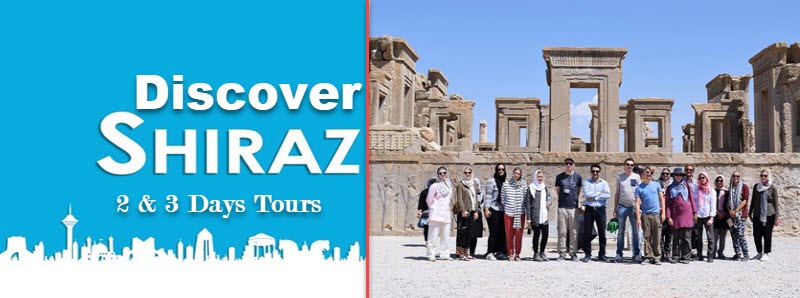 |
Between the king and the god, two child figures are depicted. Although both are badly eroded, it is still possible to see that one is holding a long mace. Consequently, there is speculation that this child may be Hormoz I, the king's heir and crown prince. Behind the king stand two noblemen, one of whom has a heraldic emblem on his hat, and holds a flywhisk over his lord's head. Another figure, armed with a sword, stands in an attitude of obeisance, saluting with his right hand, and hiding his left hand in a sleeve - an attitude prescribed by the official protocol. The two figures behind Ahuramazda have generated much discussion. Standing with their backs toward the other figures in the carving, and separated from them by a column, these individuals were perhaps absent from the investiture ceremony. Their beardless faces suggest women. The figure in front may be Ardashir's wife, and the other, her attendant. An inscription beside the relief runs: "The Zoroastrian faith had lapsed. I, the King of Kings, reestablished it”.
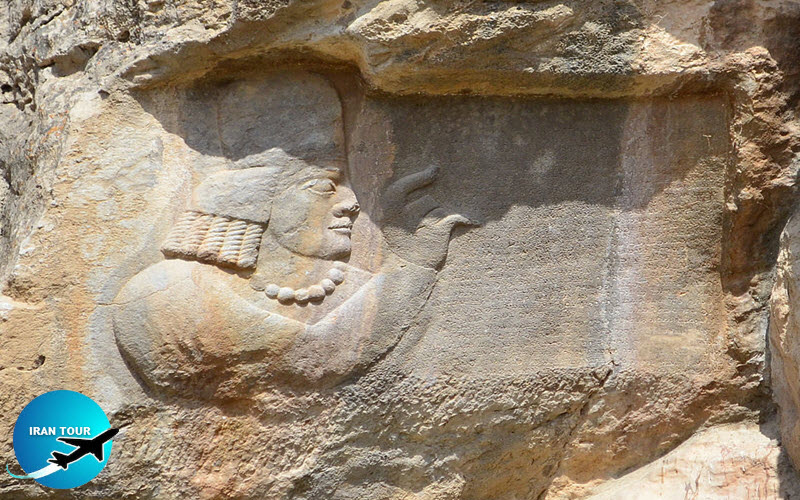 |
Kartir
Carved outside the Ardashir scene, and added to it at a later date, a figure of Kartir is shown in profile holding up his right hand with a bent forefinger. Beside him has been engraved an inscription of thirty-one lines in Sasanid Pahlavi. Of these, only the twenty-five upper lines are legible. In this inscription, the Great Magus and chief priest Kartir introduce themselves and enumerate the services he has rendered for the upbuilding of the Zoroastrian faith.
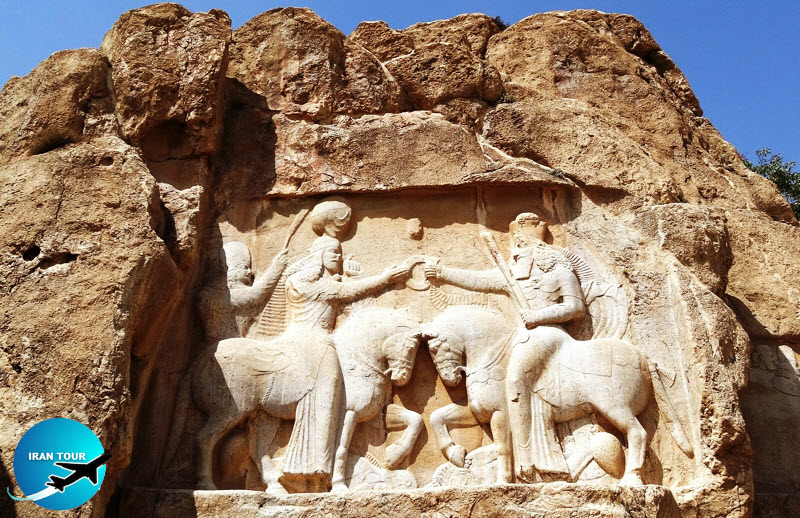 |
Coronation of Shapur I
The scene to the right shows the investiture of Shapur I. Except for its obvious stylistic development and the omission of the conquered enemy under the horse's hooves, this relief is almost identical to that showing the coronation ceremony of his father in Naqsh e Rostam. The king (on the left) is depicted receiving the circle of kingship from Ahuramazda (on the right). The figure of Ahuramazda is almost completely destroyed, and Shapur's face has been mutilated as well. The costumes and draperies also have been obliterated by wanton outrage. Both figures are mounted on horses. With gracefully curved necks and forefeet lifted off the ground, the horses are very finely executed. Shown facing each other in a classic, rearing posture, they lend a special beauty to the group.
- Details
- Category: Museums of Shiraz







